(I know you're thinking 'church' and not 'synagogue' and Christians always think like a gentile only calling the Apostle Peter, but today we need to look at ACTS through first century eyes, having ears to hear Simon Peter preach the Person of Christ Jesus who he knew and loved personally.)
Today’s look at ACTS OF THE APOSTLES focuses on the Simon Peter’s hearers in Jerusalem’s crowds and verses from two brief sections you have already read:
Parthians, and Medes, and Elamites, and the dwellers in Mesopotamia, and in Judaea, and Cappadocia, in Pontus, and Asia, Phrygia, and Pamphylia, in Egypt, and in the parts of Libya about Cyrene, and strangers of Rome, Jews and proselytes, Cretes and Arabians, we do hear them speak in our tongues the wonderful works of God.
Acts 2:9-11 KJV
Then they that gladly received his word were baptized: and the same day there were added unto them about three thousand [3000] souls.
Acts 2:41 kjv
A New Teaching Igniting Faith in Jerusalem
We learned last time from Luke’s second account, Acts of the Apostles, that: They were continually devoting themselves to the apostles’ teaching and to fellowship, to the breaking of bread and to prayer.
Two questions immediately come to mind:
- Who were the Apostles teaching?
- And what is this new teaching which grew the church so quickly?
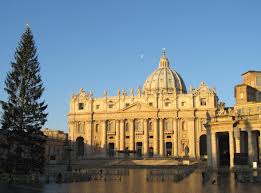
Where would this new church be built? Who were these Saints devoted to the Apostle’s teaching?
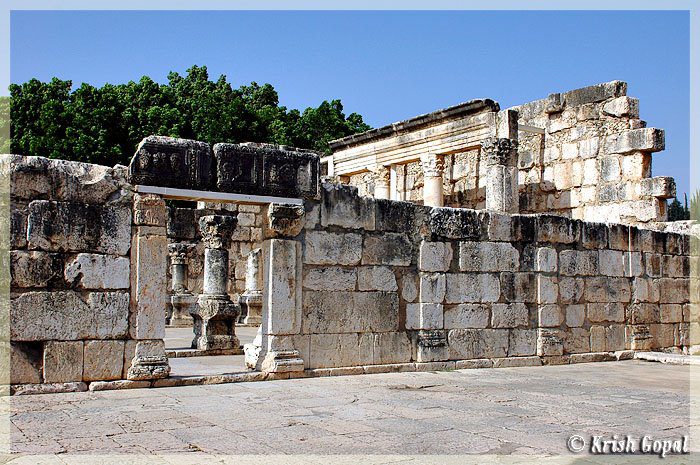
‘Church’ & ‘Synagogue’ – (You probably have the wrong picture)
Saint Simon’s Synagogue Pictured above: St Simon Peter’s Basilica [Basilica Sancti Petri] in Rome, built A.D. 1506-1626 – Originally, a basilica was an ancient Roman public building, where courts were held, as well as serving other official and public functions. —————————- Pictured left: Ruins of 4th century A.D. synagogue built around second century B.C.in Capernaum, a fishing village of about 1500, site where Simon Peter and his family likely worshiped.
And WHY am I calling these: ‘Simon’s synagogues‘ & not ‘Saint Peter’s Church?’
Let’s take a brief journey back to the time of Luke to change our imagery of the church, the saints, the synagogues and even Simon Peter.
The Gospel of *Luke
*Luke, which some take to be a contraction of Lucilius; born at Antioch, so St. Jerome. Some think that he was the only one of all the penmen of the scripture that was not of the seed of Israel. Source: Commentary of Matthew Henry
Luke, a gentile physician who may have been a Jewish proselyte, and, as some conjecture, converted to Christianity by the ministry of St. Paul at Antioch; and after his coming into Macedonia [*], wrote both his Gospel and Acts in the A.D. 60’s, some three decades after the events we are currently examining in the opening chapters of Acts.
Now it happened that while the crowd was pressing around Him [Jesus] and listening to the word of God, He was standing by the lake of Gennesaret.. And He got into one of the boats, which was Simon’s..
Luke 5:1,3a NASB20
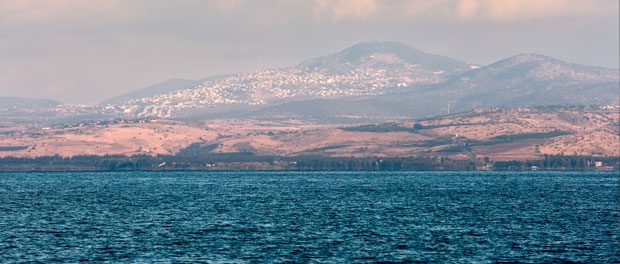
Now when He had finished speaking, He said to Simon, “Put out into the deep water and let down your nets for a catch.”
Simon responded and said, “Master, we worked hard all night and caught nothing, but I will do as You say..
Gospel of Luke 5:5a NASB20 – Simon Peter obeying Jesus after the Lord preached to the crowds from his boat.
.. they caught a great quantity of fish..
When Simon Peter saw it, he fell down at Jesus’ knees, saying, “Depart from me, for I am a sinful man, O Lord!”
Luke 5:8 NKJV
Lucilius (Luke) continues to call him ‘Simon‘
Σίμων – Pronunciation: see’-mone – proper masculine noun Root Word Of Hebrew origin שִׁמְעוֹן (H8095)
- In ACTS of the Apostles Luke always calls him: ‘Peter’ or clarifies that he is ‘Simon Peter.’
- Luke, in his Gospel, uses the name, Simon seventeen (17) times,
- referring to the Apostle as Simon, without using his Apostolic name Peter, ten (10) times.
Some of Luke’s references to Simon are not only notable, but reflect a notably Jewish context to this Apostle Jesus chose to lead His Church.
Lukas 4 (OJB)
Now Rebbe Melech HaMoshiach, full of the Ruach Hakodesh..

31 And He [Jesus] came down to Capernaum, a city of Galilee; and He was teaching them on the Sabbath; and they were amazed at His teaching, because His message was delivered with authority.
Simon, like any obedient Jew, would have been found in his local synagogue on each Shabbat. He would have heard the Messiah Jesus preach on the Sabbath. And Jesus continued to preach to the growing crowds throughout this fishing village's six-day work week. 37 And the news about Him was spreading into every locality of the surrounding region.
38 And Rebbe, Melech HaMoshiach got up from the shul and entered into the bais of Shimon. And the chamot (mother-in-law, shviger) of Shimon was fever-stricken, and they asked him about her.
Luke writes in his formal Greek (common language to those in Galilee, as well as Rome): 38 αναστας δε εκ της συναγωγης εισηλθεν εις την οικιαν σιμωνος η πενθερα δε του σιμωνος ην συνεχομενη πυρετω μεγαλω και ηρωτησαν αυτον περι αυτης [NASB with my bold emphasis and commentary, below]
38 Then He got up and left the synagogue, and entered Simon’s home. Now Simon’s mother-in-law was suffering from a high fever, and they [presumably Simon, on behalf of his wife for her mother, as would have been proper socially for only the man to address this other Man and Teacher] asked Him to help her.
And standing over her [Jesus, with Simon’s permission and by his request], He rebuked the fever, and it left her; and she immediately got up and served them.
Now while the sun was setting, all those who had any who were sick with various diseases brought them to Him; and He was laying His hands on each one of them and healing them.
Simon, an ordinary Jewish fisherman
Luke makes this point that Simon Peter had already heard Jesus preach AND witnessed his Messiah do many miracles even in his own house, BEFORE Jesus used His miracle of the full nets to call Simon Peter to be ‘a fisher of men.’
As Luke continues to tell his Good News to a growing Church decades later, the Gospel writer and author of Acts makes clear to all that Simon Peter and the Eleven are all Jews receiving their crucified and resurrected Messiah, who IS and was their Rabbi, yet more so their beloved Personal friend.
NO JEW had ever envisioned the Lord God like that, as the GOD-MAN in the FLESH, who could be sacrificed for SIN and return in the flesh from the grave!
Luke adds additional references to Simon during other key encounters with the Messiah in his Gospel.
Luke 22:
ηγγιζεν δε η εορτη των αζυμων η λεγομενη πασχα
And the Chag HaMatzot was approaching, the feast called Pesach.
ειπεν δε ο κυριος σιμων σιμων ιδου ο σατανας εξητησατο υμας του σινιασαι ως τον σιτον
31 “Simon, Simon, behold, Satan has demanded to sift you men like wheat; but I have prayed for you, that your faith will not fail; and you, when you have turned back, strengthen your brothers.”
Gospel of Luke 22:31 NASB – the Lord Jesus to the Eleven just before His Trial, Suffering and death on the Cross
And they [Cleopas and other disciples who had also seen Jesus on the road to Emmaus] got up that very hour and returned to Jerusalem, and found the eleven gathered together and those who were with them, saying, “The Lord has really risen and has appeared to Simon!” – Gospel of Luke 24:32-33 NASB20
To the early disciples of the Church, whose story Luke continues in ‘Acts’ of the Apostles, their leader was Simon – a fisherman from Capernaum teaching in Jerusalem.
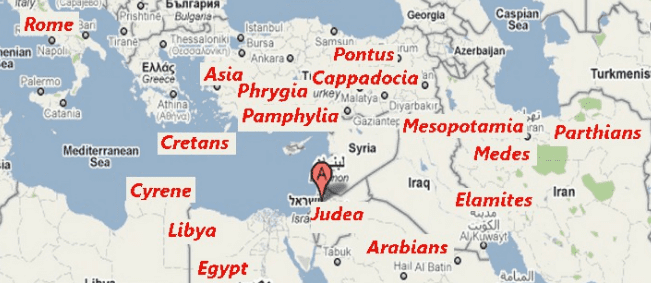
Now there were Jews residing in Jerusalem, devout men from every nation under heaven.
Simon Peter: Building a synagogue in Jerusalem
.. because each one of them was hearing them speak in his own language…
.. Behold, are not all these which speak Galilaeans?
PRAXEIS APOSTOLWN (Acts) 2 :7 ἐξίσταντο δὲ καὶ ἐθαύμαζον λέγοντες οὐχ ἰδοὺ πάντες οὗτοί εἰσιν οἱ λαλοῦντες Γαλιλαῖοι
ACTS OF THE APOSTLES begins with Luke’s connecting events of the Holy Spirit.
Matthew Henry helps us to understand Jerusalem on the Day of Pentecost as that one place in the world to where Jews would return for celebration of the Lord God.
There were dwelling or abiding at Jerusalem Jews that were devout men, disposed to religion, and that had the fear of God before their eyes (so the word properly signifies), some of them proselytes of righteousness, that were circumcised, and admitted members of the Jewish church, others only proselytes of the gate, that forsook idolatry, and gave up themselves to the worship of the true God, but not to the ceremonial law; some of those that were at Jerusalem now, out of every nation under heaven, whither the Jews were dispersed, or whence proselytes were come.
The expression is hyperbolical, denoting that there were some from most of the then known parts of the world; as much as ever Tyre was, or London is, the rendezvous of trading people from all parts, Jerusalem at that time was of religious people from all parts. Now, [Henry goes on to list those Jewish roots Luke records of those on Pentecost from these [Jews from other parts of the Roman Empire and world.]
Commentary of Matthew Henry on Acts chapter two
- We may here see what were some of those countries whence those strangers came (v. 9-11), {Matthew Henry}
- ACTS 2-17 focuses on the building of the Church in Jerusalem.
- Luke accounts for the rapid growth of the church in Jerusalem in ACTS 2-7
- And ACTS 8-12 records the missionary journeys of the APOSTLES from Jerusalem.
Growth on a Solid Foundation
Luke 9:
Then he [Jesus] called his twelve disciples together, and gave them power and authority over all devils, and to cure diseases. And he sent them to preach the kingdom of God, and to heal the sick…
When the apostles returned, they gave an account to Him of all that they had done.. the crowds .. followed Him; and He welcomed them and began speaking to them about the kingdom of God, and curing those who had need of healing…
..while He was praying alone, the disciples were with Him..
And He said to them, “But who do you say that I am?”
And Peter answered and said, “The Christ of God.”
Gospel of Luke 6:20 NASB
Luke has already revealed the thousands in the crowds who followed Jesus. The Apostles all know those of the hundreds who remained faithful even after the Lord’s crucifixion. Luke begins Acts of the Apostles with a scene of the faithful gathered in a crowded upper room in Jerusalem and then tells us:
At this time Peter stood up among the brothers and sisters (a group of about 120 people was there together),
Acts of the apostles 1:15 NASB
Beside Simon Peter stood another Apostle, Matthew Levi, who records the same conversation with Jesus we have just read from Luke.
Gospel of Matthew 16:
Simon Peter answered, “You are the Christ, the Son of the living God.”
And Jesus said to him, “Blessed are you, Simon [son of John] Barjona, because flesh and blood did not reveal this to you, but My Father who is in heaven.
Matthew 16:16-17 NASB
“And I also say to you that you are [Πέτρος petros ] Peter, and upon this [πέτρα petra] rock I will build My church; and the gates of Hades will not overpower it.
Gospel of Matthew 16:18 NASB – with links to greek roots for Peter & rock
The Second Account of Luke – ACTS of the APOSTLES
Peter said to them, “Repent, and each of you be baptized in the name of Jesus Christ for the forgiveness of your sins; and you will receive the gift of the Holy Spirit. For the promise is for you and your children and for all who are far away, as many as the Lord our God will call to Himself.”
And with many other words he solemnly testified and kept on urging them, saying, “Be saved from this perverse generation!”
So then, those who had received his word were baptized; and that day there were added about three thousand [3000] souls.
They were continually devoting themselves to the apostles’ teaching and to fellowship, to the breaking of bread and to prayer. Everyone kept feeling a sense of awe; and many wonders and signs were taking place through the apostles. And all the believers together had all things in common; and they would sell their property and possessions and share them with all, to the extent that anyone had need.
Day by day continuing with one mind in the temple, and breaking bread in the various private homes, they were taking their food together with gladness and simplicity of heart, praising God and having favor with all the people.
Acts 2:46-47a NASB20 [utilizing alternate translation noted in brackets, also in 47b, below]
And the Lord was adding to the same day by day those who were being saved.
Acts of the apostles 2:47b
ACTS OF THE APOSTLES (Simon Peter in Jerusalem) to be continued...
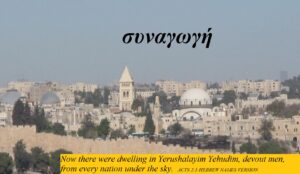
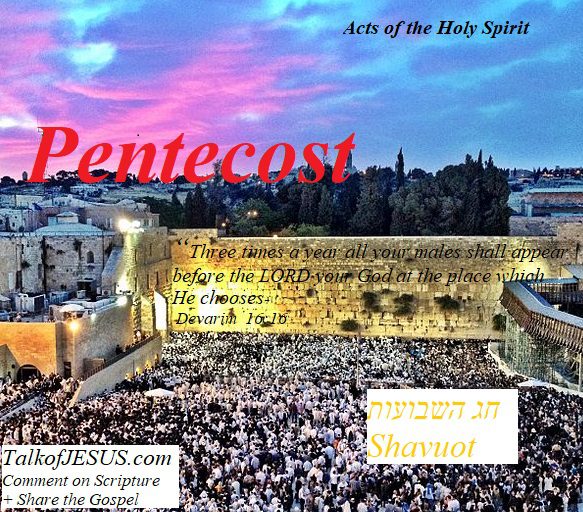
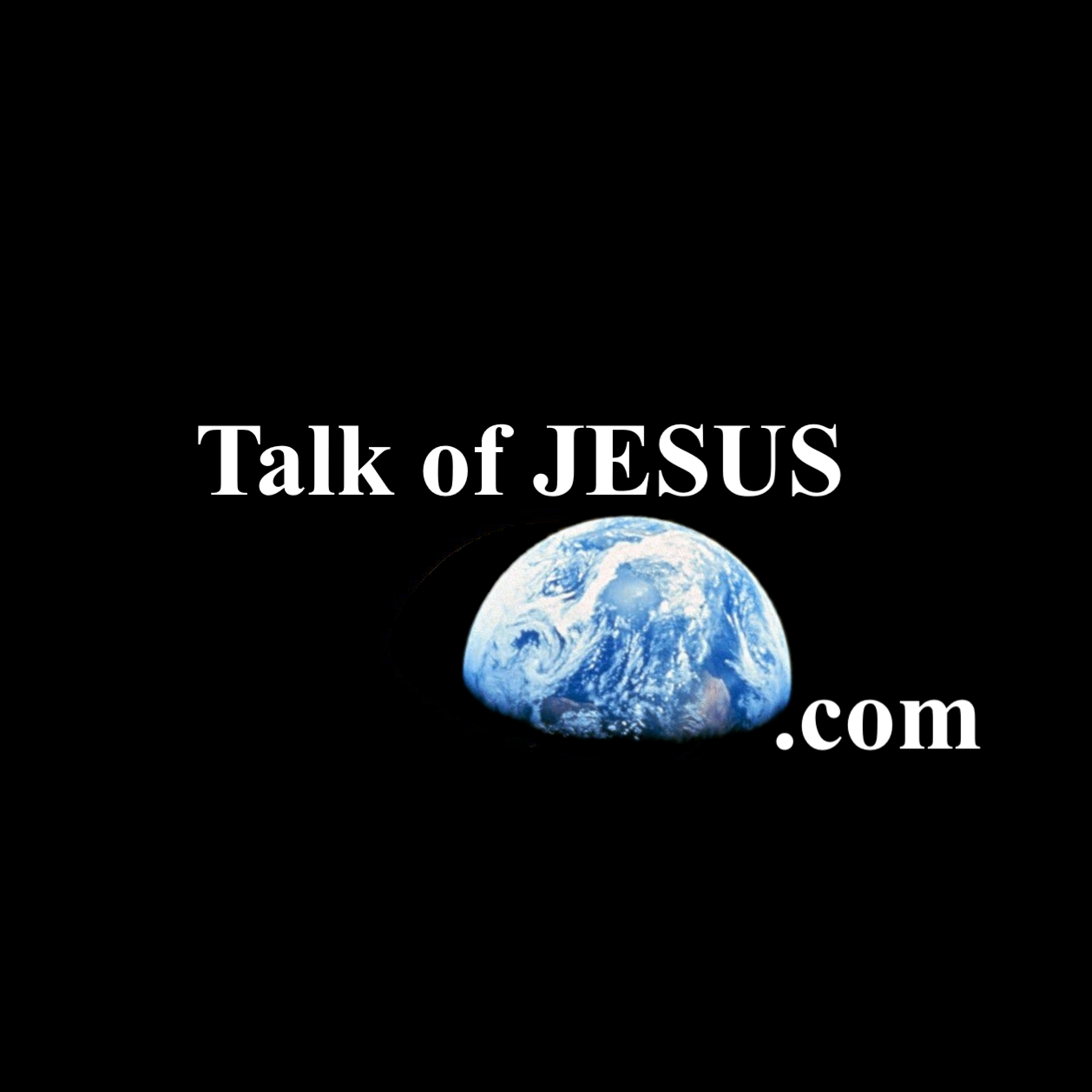
Leave a Reply